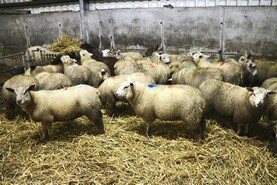The vast majority of livestock farmers have been experiencing a lack of growth and grass supply for a number of consecutive weeks (or months in some cases), resulting in below-desired farm covers as we head into mid-September.
Average farm covers last week sat at 759kg DM/ha and 750kg DM/ha for dairy and drystock farms respectively, which is only on target for farms at a stocking rate of 2.5lu/ha or less, meaning farmers at a higher stocking rate are likely behind.
It’s a catch 22 situation at the minute and is very much dependent on geography.
Farmers in the northern half of the country had been struggling up until last week with ground conditions and while the weekend weather improved things, it would take very little for conditions to revert back again.
In the southern half, a lot of farms are still in a moisture deficit and while ground conditions are allowing them to graze freely, the supply isn’t there.
Unlikely surge
Ordinarily, after a moisture deficit and poor growth, you would expect a period of compensatory growth, but we have to be mindful about how late in the year it is now. A surge in growth with the days shortening and nights getting cooler is unlikely. However, and most farmers will agree, it is still easier to leave cows out as long as possible and supplement as necessary, so every effort should be made to extend what grass is there to keep stock out.
In the west and north where ground conditions are on a knife edge, it is a more precarious situation whether to build covers or not.
Build it (through supplementation and fertiliser application) and you may not be able graze it, though if you fail to build, you definitely won’t be able graze.
It will very much be dependent on farm grazing infrastructure, soil type and farm history on whether you will get to graze or not.






 This is a subscriber-only article
This is a subscriber-only article










SHARING OPTIONS: